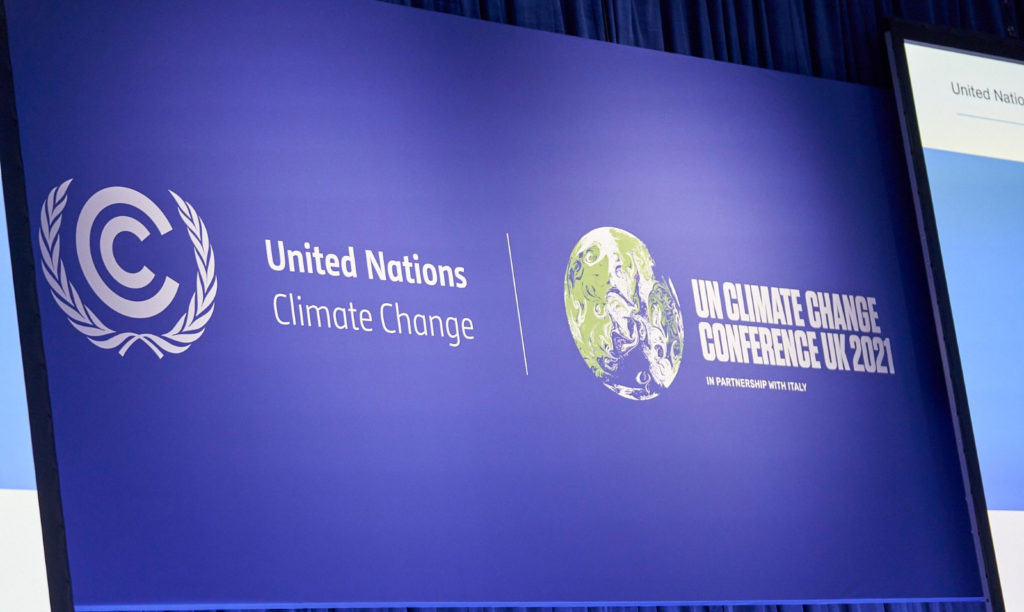COP26 has come to an end, the negotiators have left the building and the dust is settling on the Glasgow Climate Pact. While there are inevitably some disappointments, it achieved more than many thought possible, not least gathering together thousands of people from all over the world in the middle of a pandemic to advocate and work towards a common goal: moving from “aspiration to action” in order to keep alive the targets of limiting global temperature rise to 1.5°C.
We’ve highlighted some of the key moments and outcomes of the global gathering that are likely to have major impacts on business.

Climate change and nature are deeply intertwined and you can’t tackle one crisis without addressing the other.
Leaders address the elephants in the room
With the kick-off of the conference came a barrage of new climate commitments, led by India’s surprise 2070 Net Zero announcement and pledge that half its energy will come from renewable power by 2030. UN Secretary General Antonio Guterres added that “there is a deficit of credibility and a surplus of confusion over emissions reductions and net zero targets, with different meanings and different metrics.”
Guterres called for countries to be forced to update their climate plans every year if current efforts aren’t good enough, a move that has been incorporated into the final agreement and that could see nations return in 2022 with stronger targets, particularly if the finance to fund emissions reductions is made available.
Another first, astonishingly, was COP26’s mention of fossil fuels, and the need to phase down unabated coal (rather than “phase out” after India, China and the US pressed for the language to be weakened) and phase out “inefficient” fossil fuel subsidies.
There was also a strong deal to cut methane emissions by 30% by 2030, signed by more than 100 countries covering around half of global emissions, which could make an immediate impact. While much of the focus will inevitably fall on oil and gas producers, there are also major implications for the food sector, particularly for livestock and rice producers and their customers.
Nature gets a seat at the table
Biodiversity and nature had a much stronger role than ever before with more than 130 countries promising to halt deforestation by 2030, including — crucially — forest heavyweights Brazil and Russia, as well as the Democratic Republic of Congo and Indonesia. In addition, 26 nations vowed to make their agricultural policies more sustainable and a US$8.7 trillion coalition of investors committed to remove deforestation driven by agriculture out of their commodities portfolio by 2025.
It is a welcome recognition that climate change and nature are deeply intertwined and you can’t tackle one crisis without addressing the other. But it could also mean that companies in the agrifood and apparel sectors need to take more heed of how they source raw materials with a greater focus on avoiding deforestation — both directly and indirectly.
New rules for carbon markets, sustainability-related disclosure standards emerge
Finally, the rules for carbon markets set out in Paris in 2015, were agreed upon, opening the way for a wave of private sector investment to flow to emissions reductions projects around the world. The whole idea of carbon offsets was slammed by Greta Thunberg as greenwashing.
Former Bank of England Governor Mark Carney’s Taskforce for the Scaling up of Voluntary Carbon Markets envisages the voluntary carbon markets growing to US$100 billion by the end of the decade. Many view this as essential because a great deal of countries’ NDCs rely on carbon credits to meet their targets. However, the use of offsets must not be a substitute for immediate action to reduce emissions as much as possible — there is no room for a “burn now, pay later” approach.
Another Carney initiative, the Glasgow Financial Alliance for Net Zero, announced that US$130 trillion of assets, amounting to 40% of the global total, are now covered by net-zero goals, with more than 450 insurance, banking, pensions, asset owner and asset management firms signed up to the Alliance. The announcement was met with scepticism as to how much of that money will be directed to the low carbon transition, but members will have to use science-based targets to show how they will reach net zero by 2050, with interim goals for 2030. With the Science Based Targets initiative releasing a new Net Zero Standard for business, the requirements for companies are becoming ever more explicit.
In addition, to help ensure the credibility of those commitments, a new International Sustainability Standards Board is being created that will make it easier to compare the environmental performance of companies around the world and enable investors to direct their money to companies that are decarbonizing.
The UN Food and Agriculture Organisation revealed a 17% increase from 1990 in reflection of the growth of global food supply chains in the past three decades. The food supply chain is on course to overtake farming and land use as the biggest contributor to emissions.
Companies in apparel and agrifood could suffer reduced access to capital if they fail to align their value chains with net zero in the years to come, but there will be additional finance available to those looking to cut emissions in the value chain.
COP shifts gaze towards business’ role in driving transformation
Business was more prominent than ever in Glasgow, and the World Business Council for Sustainable Development called for this to be formalized by establishing a common mechanism to assess business progress and delivery against climate action targets. It would allow companies to submit their own so-called Corporate Determined Contributions to back up their net zero targets.
With concern growing about increasing numbers of companies going private, in part to avoid scrutiny, over climate change, the Science Based Targets initiative announced that it had, for the first time, approved emissions targets for six private equity firms.
One area that was not hugely prominent at the conference was the role of consumers, and how companies can drive demand towards more sustainable products. This will be an important part of the progress towards a lower-carbon economy in years to come.
Despite the many areas of progress in Glasgow, and the significance of the pledges that have been made, it is important to remember that they are non-binding and countries, companies and investors can pull out at any time without any direct penalties. Public pressure and peer pressure from others are crucial in holding organizations to their commitments.
Even more importantly, we must recognize that these pledges are not enough to meet the 1.5°C target. As we hurtle towards 2030, our window of opportunity is narrowing. Investors and companies have a key role to play in driving transformative, meaningful action and encouraging governments to be as ambitious as possible — and it’s time to step up to the plate.
Related resources

When it comes to biodiversity, businesses are at a loss
Most sustainability professionals aren’t clear about what biodiversity loss means for business and how to tackle it. Here’s what you need to know.

Video: Is your net zero commitment credible? Ask a climate expert.
In this edition, our climate expert Charlotte Bande walks us through several steps every company should take before they declare a net-zero goal.

Reductions or removals? Why science — not market forces — must shape our pathway to net zero
To reach net zero by 2050, we need a common, science-based understanding of what the goal means for business.
